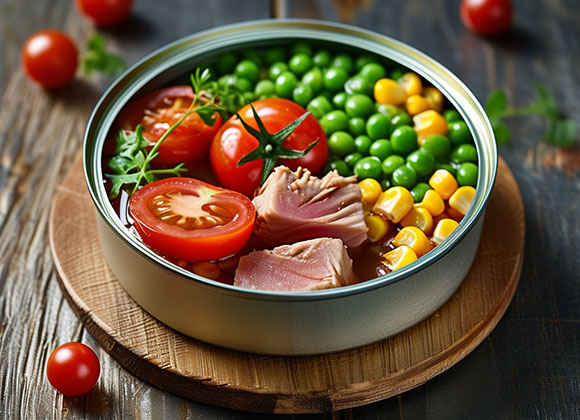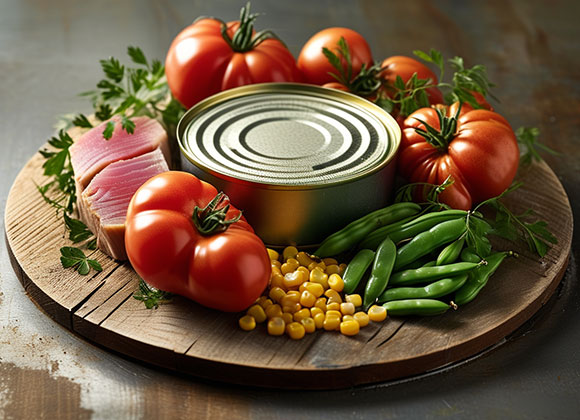STEEL PACKAGING: A SUSTAINABLE SOLUTION FOR A MORE CIRCULAR FUTURE
Steel packaging, a model material for a circular economy, plays a fundamental role in the fight against food waste, one of the biggest challenges we face today.

In the EU, approximately 59 million tonnes of food waste are generated each year (Eurostat 2022), contributing to a staggering 16% of the total greenhouse gas emissions produced by the entire EU food system.
APEAL, the association of European steel packaging producers, calls on stakeholders throughout the supply chain to recognize the crucial role of steel packaging in the fight against food waste.
Why Food Is Wasted?
Food waste is a complex problem that affects all stages of the supply chain. Strict quality and appearance standards mean that "wrong" food is discarded during production, while poor packaging design causes edible food to spoil or get damaged during transport. The problem persists at home, where a significant portion of food spoils before consumption and ends up in landfills.
The European Commission reports that 46% of food waste occurs in the consumption phase of the supply chain, almost as much as that generated by the primary production (25%) and processing and manufacturing (24%) phases combined.
Steps in the Right Direction
This year, the European Commission introduced binding food waste reduction targets that EU Member States must achieve by 2030 as part of the revised Waste Framework Directive. These include reducing waste by 10% in processing and by 30% in retail and consumption. However, innovative solutions throughout the supply chain will be necessary to achieve these goals.
Steel Packaging: A Sustainable Ally
Steel packaging boasts unique qualities that make it an indispensable tool in fighting food waste. Offering 100% barrier protection against light, water, and air, steel packaging preserves its contents more effectively than any other packaging material. Food is usually canned within four hours of harvesting, ensuring freshness and reducing the likelihood that misshapen or damaged items are discarded.


During transport, steel's durability ensures that food is protected from damage, reducing deterioration and waste.
And once food products reach consumers, steel packaging minimizes household waste by providing reduced-size items with extended shelf life and energy-free storage.
As countries celebrate World Food Day, we must recognize the importance of reducing food waste to mitigate the climate emergency. By providing the longest shelf life of any packaging format and helping to reduce waste during preparation, packaging, and transport, steel packaging can lead us to a world with less waste and a truly circular economy.